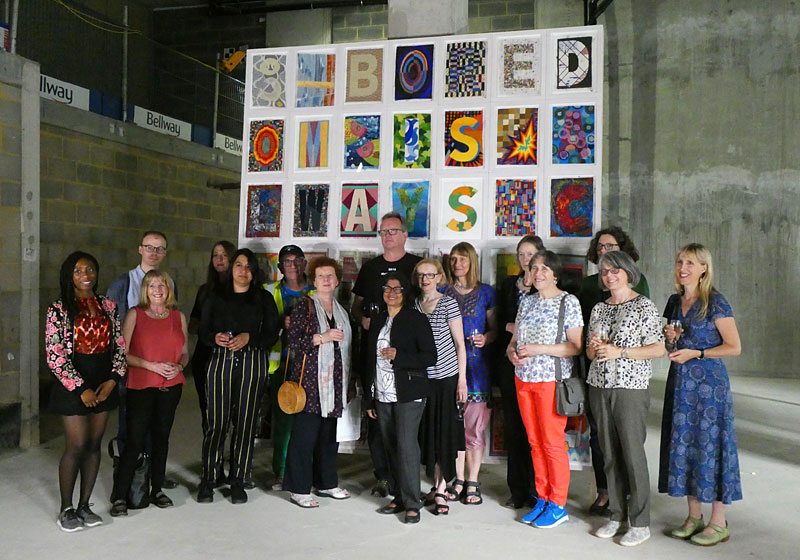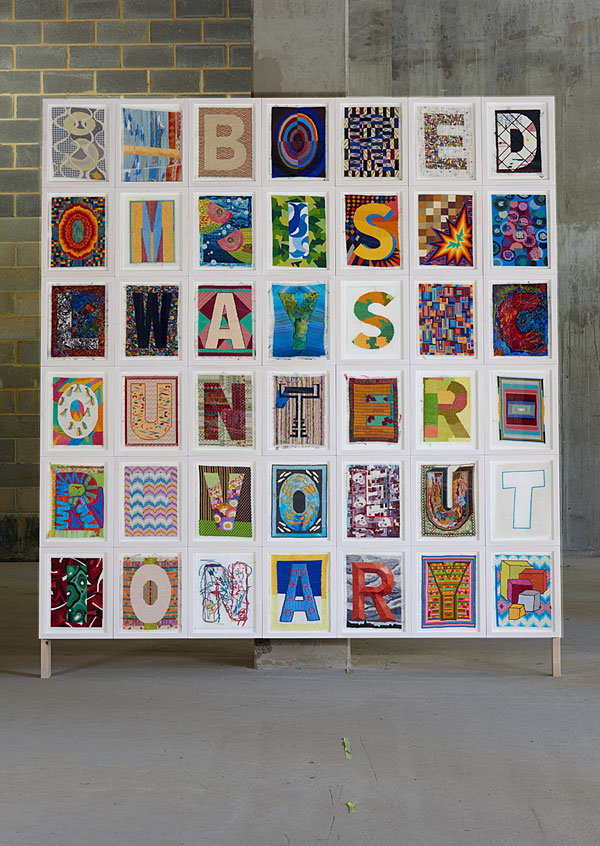RICHARD
GRAYSON
By Our Own Hand
2017-18
By Our Own Hand is an artwork made with the participation of individuals and organisations in Wandsworth. The starting point of the work is a cross-stitch tapestry, Boredom Is Always Counter- Revolutionary -a Situationist phrase by Guy Debord - made by Richard Grayson between Christmas 2012 and Easter 2015. By Our Own Hand looks at ways that ideas of work, labour and craft have been imagined from the 19th century to the present day, and how people now use manual activities and the techniques of craft to make objects that have a value and worth outside simple ideas of production. A starting point for the cross-stitch works are the samplers that were made by children and adults in pre-industrial and industrial Europe. The Victoria and Albert Museum has examples from the 14th century onwards. Their function changed over time, from a training tool and pattern resource for artisans, to decorative pictures, to formulaic schoolroom exercises, shifting from being a professional resource and means of productions to an amateur and domestic or hobbyist pastime. As industrialisation and technology became dominant, these craft skills took on another loading and value, invested with qualities that machine and factory production did not allow: such as care, reward and personal pleasure. Working with stitching, appliqué, or other techniques involving textiles and cloth, participants have developed, designed and made individual panels. Brought together these form the component letters of the phrase “Boredom Is Always Counter- Revolutionary”, originating from a situationist text by writer and filmmaker Guy Debord, which became a popular graffiti during the May 1968 events in Paris. The central question for Guy Debord was how might people find meaning and significance in the modern world, a world that alienated people not only from their work but from our experience of life. He considered play and spontaneity as the cornerstones necessary for a fulfilling life. Boredom to them was a modern phenomenon, a modern form of control. People felt their condition not exactly as a fact but simply as a fatalism, devoid of meaning, which separated every man and woman from each other. The panels, approximately A3 size, feature either one of the letters of the text, or a decorative element that functions as a spacer in the assembled work of 42 parts. The work references the practice of Italian conceptual artist Alighiero e Boetti’s series of iconic embroideries, produced in the latter part of his career and made by Afghan embroiderers. The participants are a combination of individual makers and hobbyists, as well as members of community groups. Regular meetings throughout the project have been led by embroiderer and educator James Hunting with Richard Grayson, kindly hosted and supported by the R.O.S.E Community Clubroom, Wandsworth. The project has been managed by Katrina Black. |
|
 Richard Grayson with participants |
|
